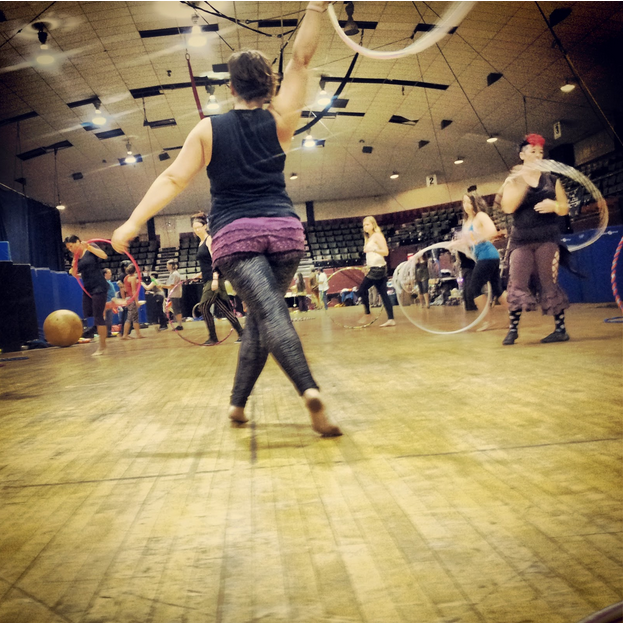When we get into a conversation about the Flow Arts with others, things get muddied up quickly with off shooting conversations about exactly what we mean by the word flow. In the English language, like many words, flow has a many different meanings. So, in order to continue the larger discussion concerning flow and the Flow Arts, let’s first define what we mean when using various terms.
[fusion_builder_container hundred_percent=”yes” overflow=”visible”][fusion_builder_row][fusion_builder_column type=”1_1″ background_position=”left top” background_color=”” border_size=”” border_color=”” border_style=”solid” spacing=”yes” background_image=”” background_repeat=”no-repeat” padding=”” margin_top=”0px” margin_bottom=”0px” class=”” id=”” animation_type=”” animation_speed=”0.3″ animation_direction=”left” hide_on_mobile=”no” center_content=”no” min_height=”none”]
The first thing to come up is the psychological concept of flow. This is the primary research of Mihály Csíkszentmihályi who defines flow as a mental state of complete focus, that merges action and awareness, while losing the self-consciousness. Further, he describes flow as an activity in which a person has personal control, which includes a subjective distortion of time and that flow is intrinsically rewarding. This concept has been in Asian cultures like Buddhism, Hinduism and Taoism for millennia as the concept of being whole and one with yourself. This moment can be experienced by anyone in any activity when they feel like their body and mind are highly focused. Many people would liken this to someone being “in the zone”.
Secondly, the term flow is an analogy to water that has entered the english lexicon in many different expressions. For example, to ebb and flow – to increase or decrease energy throughout a something. Another is to go with the flow, to follow the natural state of things and not stop and block what is already happening. The western psychological term has been named after these expressions specifically. There are many other ways in which the term flow is used. Musical flow, data flow, and the flow of electricity all fall under the category of expressions in the english language that use the term to express something that moves like a stream of water.
[/fusion_builder_column][fusion_builder_column type=”1_1″ background_position=”left top” background_color=”” border_size=”” border_color=”” border_style=”solid” spacing=”yes” background_image=”” background_repeat=”no-repeat” padding=”” margin_top=”0px” margin_bottom=”0px” class=”” id=”” animation_type=”” animation_speed=”0.3″ animation_direction=”left” hide_on_mobile=”no” center_content=”no” min_height=”none”]
Third, flow is the actual grace of your movement or dance. This is also an analogy, however, and it specifically refers to grace of a person. A good dancer has flow to their movement, and it appears as if they are floating on water. Although dance is an intense sport, an experienced dancer gives the impression that it is effortless. The opposite of a dancer with flow would be that of someone who is awkward, self-conscious and tense. A person who cannot dance blocks flow, and therefore lacks the grace and poise and is difficult to watch.
[/fusion_builder_column][fusion_builder_column type=”1_1″ background_position=”left top” background_color=”” border_size=”” border_color=”” border_style=”solid” spacing=”yes” background_image=”” background_repeat=”no-repeat” padding=”” margin_top=”0px” margin_bottom=”0px” class=”” id=”” animation_type=”” animation_speed=”0.3″ animation_direction=”left” hide_on_mobile=”no” center_content=”no” min_height=”none”]Fourth, is a relatively new noun called the Flow Arts. We capitalize this name to differentiate it from the adjective descriptions above. It refers specifically to circus disciplines such as poi spinning, hula hooping, staff, fans, and many other prop related and movement arts. Many people will also use the term prop manipulation or spinning to describe the Flow Arts (stay tuned for a future article about why there is a difference between the terms). There is a lot of debate surrounding the concept and terminology of the Flow Arts. However, with documentary projects, the Flow Arts Institute and other groups and organization in debelopment, Flow Arts, as a term, is here to stay.
This article acts as a foundation and reference for future articles about the Flow Arts in order to ensure clarity in our concepts and discussions. If you have further definitions or ideas about these concepts please comment and let us know! We can edit to include other ideas to make sure the community is all on the same page.
*Mihaly Csikszentmihalyi (1990). Flow: The Psychology of Optimal Experience. Harper & Row. ISBN 978-0-06-016253-5.
[/fusion_builder_column][/fusion_builder_row][/fusion_builder_container]




